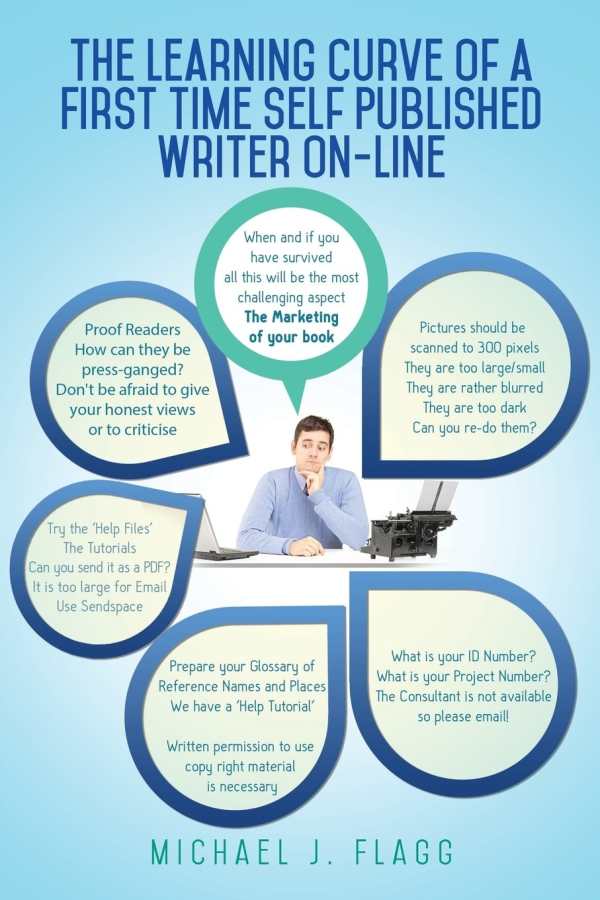The Learning Curve of a First Time Self Published Writer On-line
The Learning Curve is a candid account of a publishing experience gone awry; it contains many insights for aspiring writers.
The Learning Curve of a First Time Self Published Writer On-Line by Michael J. Flagg is one man’s cautionary tale, based in experience and aimed at writers who are considering self-publishing.
There is much information available on self-publishing, though it is a rare that a source focuses almost entirely on an individual author’s unsuccessful experience. This short book does that. It is a postmortem of Flagg’s foray into publishing a biography; it includes sobering lessons regarding the complexity of the publishing process and the difficulty of marketing and selling a book.
Flagg describes, in painful detail, his ill-fated project. He decided to write a biography of Arthur Edwin Simms, a rather obscure British individual who went from being a performer in Punch and Judy shows to becoming “an influential figure in the field of hospitality and catering education.”
Flagg candidly discusses the extensive amount of research that was necessary, the writing process (including a self-aware critique of the book’s introduction), the work and cost associated with producing an oversized book with over two hundred illustrations, and the numerous marketing activities he executed in support of the book.
As the book progresses, Flagg admits to his critical errors of judgment while also asserting that self-publishing a book is largely a labor of love—certainly not a profit-making enterprise.
While Flagg’s story could be viewed as more a mea culpa than anything else, valuable lessons for writers, especially nonfiction writers, are embedded in the text. The author’s book project appears doomed from the very start, both because of the limited interest in the subject matter and because of a publishing price point that is exorbitant.
Flagg recognizes that these two factors alone probably accounted for the book’s lack of sales, and there is more to the tale that writers should reflect upon. Flagg offers useful insights into the laborious editing and print production process, right down to technical details regarding the use of Microsoft Word, illustrations, and PDFs. He also talks about copyright and permission rights, a crucial area for works of nonfiction.
Perhaps most useful is the author’s forthright overview of his various attempts to market the book. Flagg discusses tactics such as creating a web page for the book, soliciting reviews, executing an email campaign, appearing at conferences and meetings, reaching out to university librarians, submitting the book for documentary consideration, and more. If a book does not sell, his tale shows, it should not be for lack of trying.
Flagg willingly shares his trials and tribulations in a way that generates considerable sympathy, and his realizations should speak volumes to fledgling writers:
The key question at the conception of the idea for a book was ‘who are the purchasers, who would be interested in buying it?’ It was this vital issue that was not sufficiently addressed because of assumptions about a ‘captive market’ which after the passage of time did not materialise.
By documenting his unfortunate experience with candor, Michael Flagg has produced a work that may prevent other writers from making avoidable mistakes.
Reviewed by
Barry Silverstein
Disclosure: This article is not an endorsement, but a review. The publisher of this book provided free copies of the book and paid a small fee to have their book reviewed by a professional reviewer. Foreword Reviews and Clarion Reviews make no guarantee that the publisher will receive a positive review. Foreword Magazine, Inc. is disclosing this in accordance with the Federal Trade Commission’s 16 CFR, Part 255.

